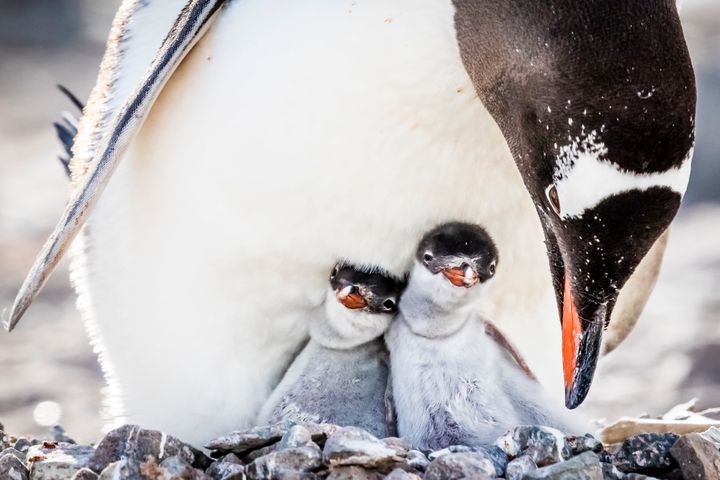You know you’re close to someone when you start pebbling.
The latest friendship buzzword comes from an unlikely but rather cute source: penguins.
“Recently I learned that the act of sending your friends [and] family little videos and tweets and memes you find online [is] called pebbling, like how penguins bring pebbles back to their little penguin loved ones,” an X user wrote on the social media platform late last month.
The penguins may have the right idea: As we age, friendships become increasingly difficult to maintain. New responsibilities crop up ― babies, more demanding roles at work ― pushing friendships to the wayside. Other times, one friend moves to a different state, physically testing the bonds of friendship. (If you live in a traffic-heavy place like Los Angeles, even a move to a different neighborhood can result in dwindling get-togethers.)
As we’ve written before, when you haven’t seen each other for a while and don’t have the emotional bandwidth to engage in a full-on conversation, sending a meme or a funny video ― pebbling, as it’s now being called ― is a great way to maintain a friendship.
“It’s a way of saying, I see you, I know who you are, I know what you value,” said Marisa Franco, a psychologist and author of “Platonic: How the Science of Attachment Can Help You Make ― and Keep ― Friends.”
As Franco explained, sending a meme about something you both love (a repurposed clip from “Succession,” for instance) or some shared experience (a jokey tweet or how much you both hate hiking) helps affirm the homophily that already exists between you.
Homophily is a concept in sociology that literally means “love of sameness.” It’s a term used to describe the tendency of people to associate and bond with others who are similar to them, so you can think of it as a five-dollar word, academic version of “birds of a feather flock together.”

Pebbling also feels good for the sender, said Marie Land, a psychologist in Washington, D.C.
“If you’re sending a meme, you might think, ‘I feel good about myself for making this attempt to connect,’” Land told HuffPost. “It could be a way to manage one’s own guilt for not doing more.”
Land added that there are obviously times when a friendship or relationship needs more than a meme to get by ― a call about something weighing on you or actual time spent together ― but overall she thinks pebbling is a nice relational placeholder.
“It’s a way of saying, ‘I care about you, but I can’t do more right this second,’” she said.
And if you’re wondering, yes, penguin experts say penguins absolutely do “pebble” for their families.
Some Antarctic penguins ― Adélie, chinstrap and gentoo ― collect pebbles to build their nests, said Steve Emslie, a marine ornithologist and professor of biology and marine biology at the University of North Carolina. The emperor penguin, known from the 2006 documentary “March of the Penguins,” does not pebble since it breeds on sea ice rather than in the shallow coastal areas ― flat, rocky beaches, low coastal plains ― that the pebbling penguins prefer.
“The resulting pebble nest the penguins build helps protect the eggs and keep them from rolling away, or keeps them above the melted water that might freeze and kill the eggs,” Emslie told Newszetu.

Every once in a while, pebbling results in some high-stakes drama.
“Sometimes early in the season, one penguin will steal pebbles from a neighbor’s nest when they aren’t looking,” he said. “It is fascinating behavior to watch.”
Even after chicks are hatched or grown, penguins may continue to collect pebbles one by one and present them to their mate, sometimes followed with some head bowing and vocal calling, as is the case for the gentoo.
As a penguin expert, Emslie likes the idea that pebbling has crossed over to humans.
“I like the term ‘pebbling’ as it’s being used now for sharing short videos and tweets with family and friends,” he said. “I think it’s a nice way to describe that activity.”
Credit: Source link